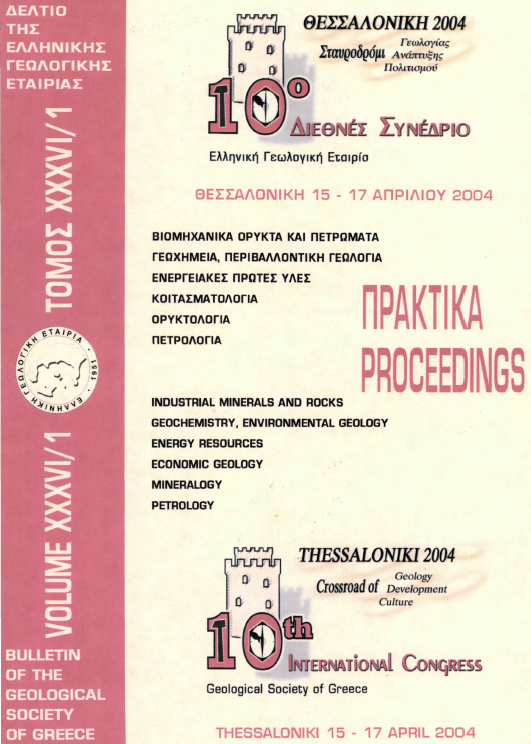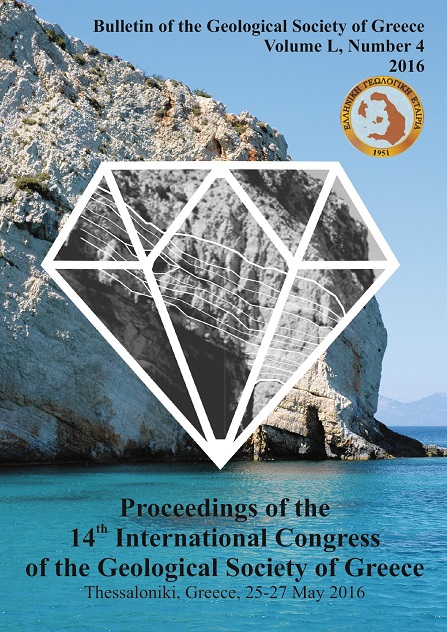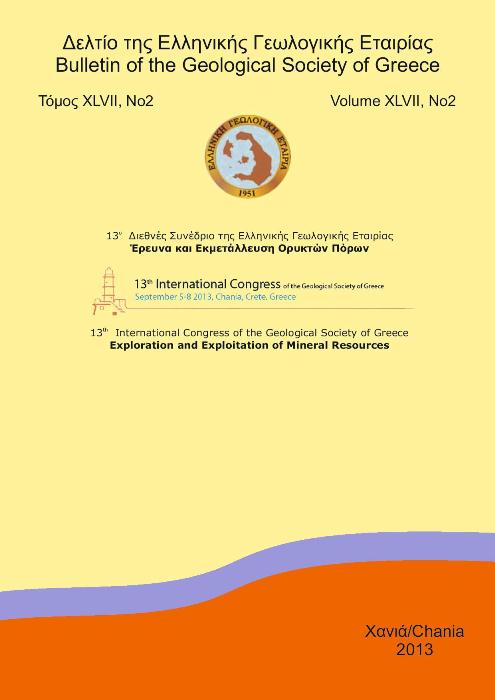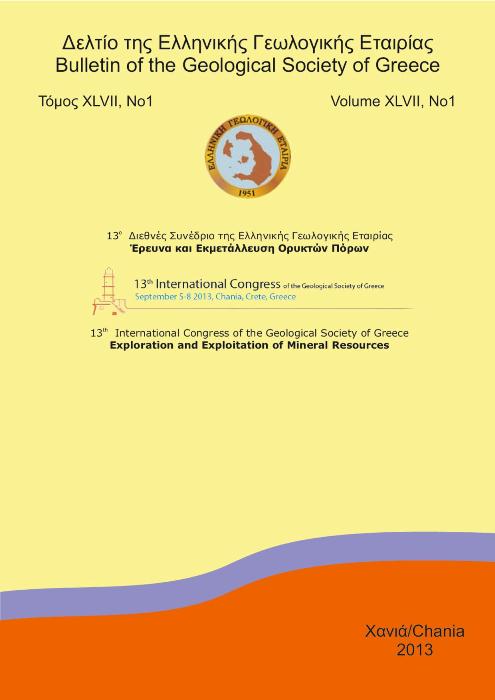PHYSICAL AND CHEMICAL PROPERTIES OF SOME GREEK KAOLINS OF DIFFERENT ENVIRONMENTS OF ORIGIN
Περίληψη
Two widely different kaolin deposits were investigated in order to determine their physical and chemical properties and suggest their possible utilization. Kaolin deposits from Leucogia area, NE Greece, were formed in situ by weathering of gneissic rocks under a temperate climate; they consist largely of halloysite exhibiting different morphological forms, and stacks and plates of kaolinite in various proportions. The kaolin occurrences of Kos island are products of hydrothermally altered rhyolitic rocks of Pliocene age. The highly altered samples contain dickite and kaolinite. Testing included particle size distribution, brightness and whiteness, measurement of CEC (cation exchange capacity) and some ceramic properties including Atterberg limits. The CEC values range between 3.8-8 meq/100 g and 0.8-2.2 meq/100 g for kaolin samples from Leucogia and Kos island respectively and reflect the differences in clay mineralogy and the characteristic kaolin mineral present. Platy halloysite enhances CEC in Leucogia kaolins while kaolinite-rich samples in Kos exhibit higher CEC values than dickite-rich samples. Atterberg limit tests reveal the Leucogia and Kos kaolins to be of low to medium plasticity and to be classified in the category of kaolinitic clays suitable for brick making. The Leucogia kaolin shows relatively higher brightness (47-60%) and whiteness (62-77%) than Kos kaolin (41-48% and 61-66% respectively). These properties are influenced by the type of kaolin mineral present, their relative proportions and the FeaCb content of the samples. The obtained values for brightness and whiteness from both areas are lower compared to the standard commercial kaolins for the paper and filler market. Brightness, however, can be improved by fine grinding and refinement. The physical, chemical and mineralogical properties of Leucogia and Kos kaolins indicate that they are of low grade type. However, kaolin processing from the crude state can optimize some of these highly commercial properties
Λεπτομέρειες άρθρου
- Πώς να δημιουργήσετε Αναφορές
-
Tsolis-Katagas, P., & Papoulis, D. (2004). PHYSICAL AND CHEMICAL PROPERTIES OF SOME GREEK KAOLINS OF DIFFERENT ENVIRONMENTS OF ORIGIN. Δελτίο της Ελληνικής Γεωλογικής Εταιρείας, 36(1), 130–138. https://doi.org/10.12681/bgsg.16592
- Ενότητα
- Βιομηχανικά Ορυκτά και Πετρώματα

Αυτή η εργασία είναι αδειοδοτημένη υπό το CC Αναφορά Δημιουργού – Μη Εμπορική Χρήση 4.0.
Οι συγγραφείς θα πρέπει να είναι σύμφωνοι με τα παρακάτω: Οι συγγραφείς των άρθρων που δημοσιεύονται στο περιοδικό διατηρούν τα δικαιώματα πνευματικής ιδιοκτησίας επί των άρθρων τους, δίνοντας στο περιοδικό το δικαίωμα της πρώτης δημοσίευσης. Άρθρα που δημοσιεύονται στο περιοδικό διατίθενται με άδεια Creative Commons 4.0 Non Commercial και σύμφωνα με την οποία μπορούν να χρησιμοποιούνται ελεύθερα, με αναφορά στο/στη συγγραφέα και στην πρώτη δημοσίευση για μη κερδοσκοπικούς σκοπούς. Οι συγγραφείς μπορούν να: Μοιραστούν — αντιγράψουν και αναδιανέμουν το υλικό με κάθε μέσο και τρόπο, Προσαρμόσουν — αναμείξουν, τροποποιήσουν και δημιουργήσουν πάνω στο υλικό.









